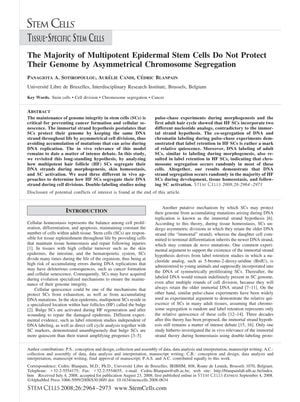TLDR Most hair follicle stem cells do not protect their DNA by dividing it unevenly.
The study, conducted on a total of 48 mice, examined the validity of the immortal strand hypothesis in hair follicle stem cells (SCs) by tracking DNA strand segregation using nucleotide analogs CldU and IdU. The hypothesis posits that SCs protect their genome by asymmetrically segregating their DNA strands during cell division. However, the study's findings contradicted this hypothesis, showing that the majority of hair follicle SCs do not employ asymmetrical chromosome segregation. Instead, chromosome segregation appears to occur randomly during development, tissue homeostasis, and SC activation. Label retention in these cells was associated with relative quiescence rather than asymmetric segregation. The study's results suggest that random DNA strand segregation might be a common mechanism in adult SCs, challenging the previously held belief that asymmetrical segregation is a means of protecting the genome in multipotent epidermal stem cells.
415 citations
,
January 2008 in “Cell” NFATc1 controls hair stem cell activity, affecting hair growth and could be a target for hair loss treatments.
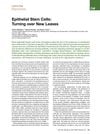 508 citations
,
February 2007 in “Cell”
508 citations
,
February 2007 in “Cell” Epithelial stem cells are crucial for tissue renewal and repair, and understanding them could improve treatments for damage and cancer.
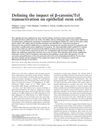 384 citations
,
June 2005 in “Genes & development”
384 citations
,
June 2005 in “Genes & development” β-catenin is essential for stem cell activation and proliferation in hair follicles.
421 citations
,
September 2003 in “Development” Stem cell behavior varies with stimuli, and lineage changes can happen without affecting stem cell division.
561 citations
,
April 2003 in “Journal of Investigative Dermatology” CD34 is a marker for isolating stem-like cells in mouse hair follicles.
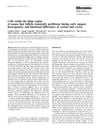 130 citations
,
January 1994 in “Differentiation”
130 citations
,
January 1994 in “Differentiation” Mouse hair follicle cells briefly grow during the early hair growth phase, showing that these cells are important for starting the hair cycle.
1 citations
,
June 2022 in “bioRxiv (Cold Spring Harbor Laboratory)” Reprogramming 3D environments can create hair follicles in the lab.
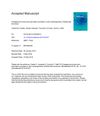 36 citations
,
May 2016 in “Biomaterials”
36 citations
,
May 2016 in “Biomaterials” Endo-HSE helps grow hair-like structures from human skin cells in the lab.
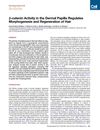 314 citations
,
April 2010 in “Developmental Cell”
314 citations
,
April 2010 in “Developmental Cell” β-catenin in the dermal papilla is crucial for normal hair growth and repair.
January 2002 in “Basic medical sciences and clinics” Hair follicle stem cells are crucial for hair growth and renewal.
